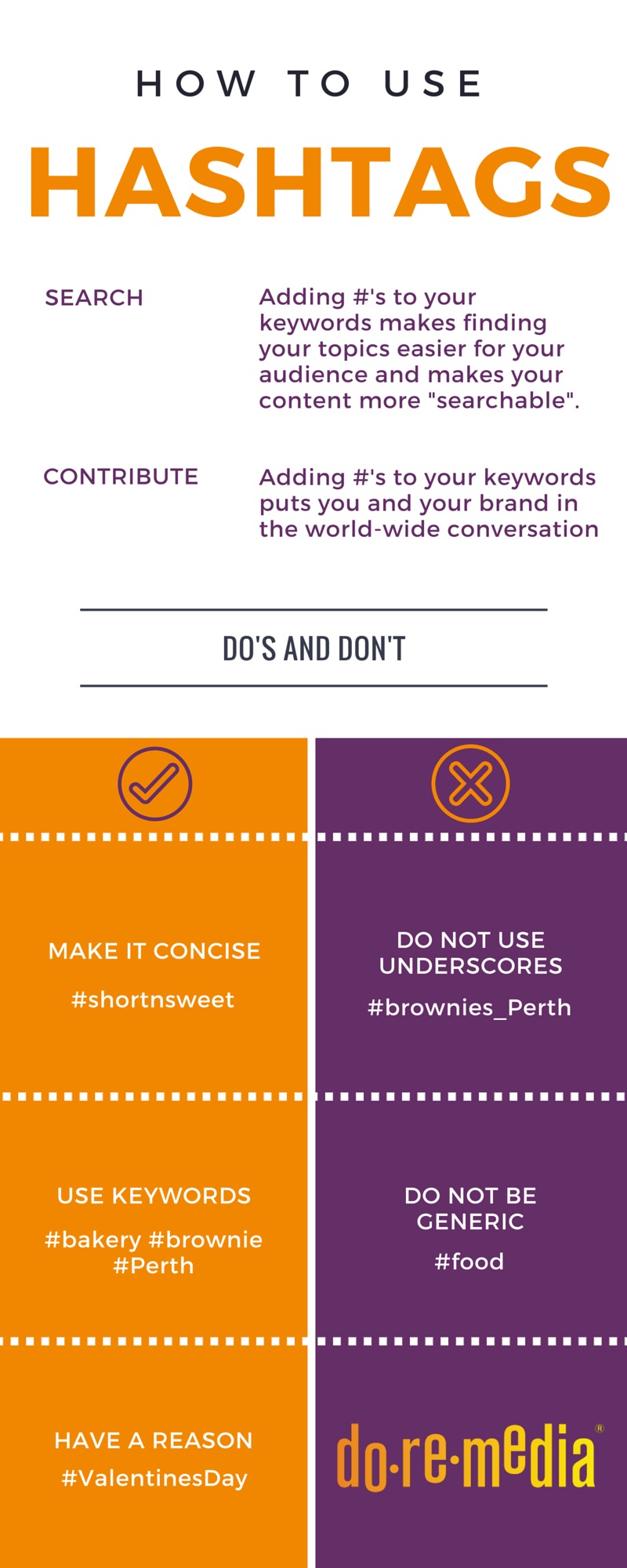How to win at Hashtags
Hashtags arose from depths of cyber history (1988) as category stamps for grouping content created and sent through the IRC (Internet Relay Chat). It didn’t find its way into our social media platforms until a tweet sent in 2007 was sent from designer Chris Messina as a suggested way of forming online conversation groups.
Like everything on social media, the masses determined its evolution. Now hashtags are used to include pieces of content into categories around anything and everything.
So how can we use hashtags in social media marketing?
The two most basic functions hashtags can offer (even the most casual tagger) are searching for and contributing to hashtag categories.
Searches around themes, topics, images or news around your brand can help refine and also expand your brand.
The world-wide contribution to the hashtag categories means that you can have access to the zeitgeist around anything that piques your interest – and might help connect you to trends which will help extend beyond your brand reach.
Contributing to hashtag categories puts you and your brand into the world-wide content conversation around that topic, image or idea. As we said above, YOU then become searchable in relation to that hashtag category. It also provides a link to the hashtag category for your audience to follow, showing you are connected to the community formed around the hashtag category. This is great for your brand credibility and reputation – you are connecting your audience to a greater contributing community, formed around the aesthetics you’ve associated to your brand.
Choosing effective hashtags.
Creating a hashtag is a fine balance between conforming with the most popular, or trending, tags and placement of your own unique voice or branding. For example, if you baked some brownies and attach #chocolate to your brownies post, tweet or pic, it is going to be grouped in with literally millions of other chocolate-related posts. If however, you introduce something more specific (but still concise, fun and catchy) eg. #browniejoy, it will connect your post to others who appreciate brownies, specifically.
As with all our posting, hashtags are another way of participating in an online conversation. Whilst they are great for campaigns (Subway #eatfresh, Coke #cokeislife) etc, it’s also good PR to use them for fun, or humour (#iateallthebrownies #sorrynotsorry)
There are some great tools out there for help and analytics for hashtags. One is Rite Tag, which uses analytics to determine the effectiveness of your hashtag of choice. Read more about Rite Tag here.
Do’s and Don’ts
- Do make it as concise as possible
#noonewilluseahashtagthatisthislong #shortnsweet - Do use keywords
#brownies #Perth #freshbaked - Do not use underscores if you can help it
#brownies_Perth is less effective than #browniesPerth or #brownies #Perth - Do have a reason for your hashtag. (A good gag is a valid use!)
#iwinathashtag #badpun - Do not be too generic with your tagging. It will plonk you in an ocean of vaguely-related posts.
#food will not lead followers to your #brownies
Need more help? Go to this terrific Infographic or contact Do Re Media for a consultation.




No comments